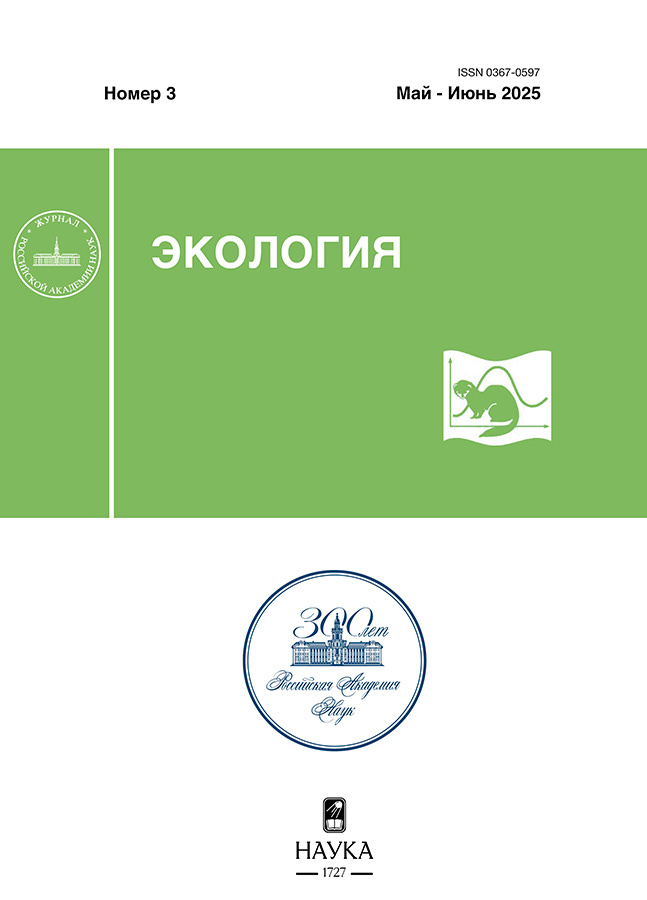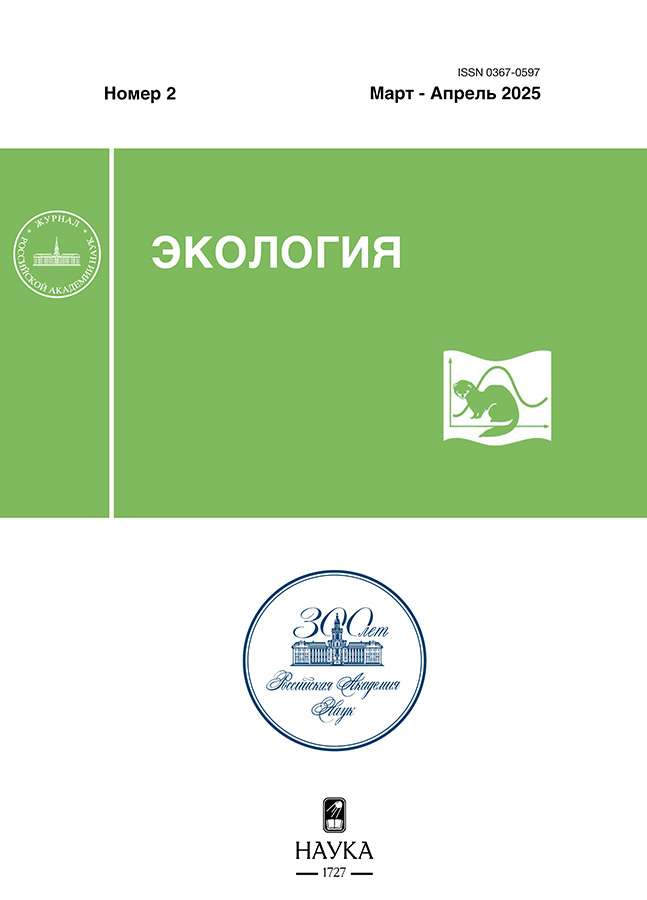Essence of oil pollution of the Caspian seal (Pusa caspica)
- Authors: Brodsky E.S.1, Shelepchikov A.A.1,2, Kudryavtseva A.D.1, Solovyova M.A.1, Mir-Kadyrova E.Y.1, Klimov F.V.3, Rozhnov V.V.1
-
Affiliations:
- Severtsov Institute of Ecology and Evolution of the Russian Academy of Sciences
- Russian State Center for Animal Feed and Drug Standardization and Quality
- Kazakhstan Agency of Applied Ecology
- Issue: No 2 (2025)
- Pages: 127-133
- Section: Articles
- URL: https://clinpractice.ru/0367-0597/article/view/682258
- DOI: https://doi.org/10.31857/S0367059725020044
- EDN: https://elibrary.ru/TZNDMY
- ID: 682258
Cite item
Abstract
Petroleum products in blubber of a dead Caspian seal washed ashore were studied. It has been shown that the content of petroleum products in the adipose tissue of the Caspian seal (Pusa (Phoca) caspica) is relatively high, but less than the maximum values found previously. Petroleum products in seal blubber include n- and iso-alkanes, alkyl-substituted mono-, bi- and tricycloalkanes, alkylbenzenes, naphthene- and dinaphthenebenzenes, alkylnaphthalenes, and small quantities of acenaphthenes, fluorenes, phenanthrenes, naphthenophenanthrenes, fluoranthenes/pyrenes, and benzothiophenes. Aromatic compounds amount to 50% of all petroleum products, PAHs (including naphthalenes) – to 10%. The majority of aromatic compounds are represented by molecules with 3–12 C atoms in alkyl substituents, while the content of unsubstituted compounds (with the exception of phenanthrene) is relatively small. The distribution of n-alkanes with a high contribution of C17, as well as the prevalence of even n-alkanes C16–C18 and C22–C24, indicates their origin from various biogenic sources. An estimate of the total content of petroleum products in Caspian seal blubber gives about 40% of all extracted compounds.
Full Text
About the authors
E. S. Brodsky
Severtsov Institute of Ecology and Evolution of the Russian Academy of Sciences
Author for correspondence.
Email: efbr@mail.ru
Russian Federation, 33, Leninsky Ave., Moscow, 119071
A. A. Shelepchikov
Severtsov Institute of Ecology and Evolution of the Russian Academy of Sciences; Russian State Center for Animal Feed and Drug Standardization and Quality
Email: efbr@mail.ru
Russian Federation, 33, Leninsky Ave., Moscow, 119071; 5, Zvenigorodskoe Hwy, Moscow, 123022
A. D. Kudryavtseva
Severtsov Institute of Ecology and Evolution of the Russian Academy of Sciences
Email: efbr@mail.ru
Russian Federation, 33, Leninsky Ave., Moscow, 119071
M. A. Solovyova
Severtsov Institute of Ecology and Evolution of the Russian Academy of Sciences
Email: efbr@mail.ru
Russian Federation, 33, Leninsky Ave., Moscow, 119071
E. Ya. Mir-Kadyrova
Severtsov Institute of Ecology and Evolution of the Russian Academy of Sciences
Email: efbr@mail.ru
Russian Federation, 33, Leninsky Ave., Moscow, 119071
F. V. Klimov
Kazakhstan Agency of Applied Ecology
Email: efbr@mail.ru
Kazakhstan, 157, Jibek Joly Ave., Almaty, 050000
V. V. Rozhnov
Severtsov Institute of Ecology and Evolution of the Russian Academy of Sciences
Email: rozhnov-v-2015@yandex.ru
Russian Federation, 33, Leninsky Ave., Moscow, 119071
References
- Красная книга Российской Федерации. Т. «Животные». 2-е изд. М.: ФГБУ «ВНИИ Экология», 2021. 1128 с.
- Соловьёва М.А., Рожнов В.В. Каспийский тюлень Phoca caspica Gmelin, 1788 // Красная книга Российской Федерации. T. «Животные». 2-е изд. М.: ФГБУ «ВНИИ Экология», 2021. С. 1011–1012.
- Рожнов В.В., Бизиков В.А., Магомедов М.-Р.Д. и др. О гибели каспийских тюленей на дагестанском побережье Каспийского моря осенью 2020 г. и ее возможных причинах // Труды ВНИРО. 2022. Т. 187. С. 87–109. https://doi.org/10.36038/2307-3497-2022-187-87-109
- Захарова Н.А. Уровень накопления и влияние ряда токсикантов на состояние популяции каспийского тюленя: Автореф. канд. дис. Астрахань, 2003.
- Volodina V., Karygina N., Popova O. et al. The status of parenchymatous organs of the Caspian Seal Phoca caspica under the conditions of toxicant accumulation // Ekologia (Bratislava). 2018. V. 37. № 3. P. 230–242. doi: 10.2478/eko-2018-0019
- Государственный доклад «О состоянии и использовании водных ресурсов Российской Федерации в 2017 году». М.: НИА-Природа, 2018. 298 с.
- Захарова Н.А. Влияние поллютантов на воспроизводительную способность популяции каспийского тюленя (Phoca caspica Cmelin, 1788) // Морские млекопитающие Голарктики: Сборник научных трудов. СПб, 2006. С. 214–217.
- Ashraf W., Mian A. Total petroleum hydrocarbon burden in fish tissues from the Arabian Gulf // Toxicological and Environmental Chemistry. 2010. V. 62. № 1. P. 61–66. https://doi.org/10.1080/02772240902862220
- Enuneku A.A., Ainerua M., Erhunmwunse N.O., Osakue O.E. Total petroleum hydrocarbons in organs of commercially available fish // Ife Journal of Science. 2015. V. 17. № 2. P. 383–393.
- Jisr N., Younes G.E., Omari K. et al. Levels of heavy metals, total petroleum hydrocarbons, and microbial load in commercially valuable fish from the marine area of Tripoli, Lebanon // Environmental Monitoring and Assessment. 2020. V. 192. Art. 705. https://doi.org/10.1007/s10661-020-08672-w
- Muijs B., Jonker M.T.O. A closer look at bioaccumulation of petroleum hydrocarbon mixtures in aquatic worms // Environmental Toxicology and Chemistry. 2010. V. 29. № 9. P. 1943–1949. https://doi.org/10.1002/etc.263
- Nozar S.L.M., Pauzi M.Z., Salarpouri A. et al. Total petroleum hydrocarbons in edible marine biota from Northern Persian Gulf // Environmental Monitoring and Assessment. 2015. V. 187. № 4. P. 1–6. https://doi.org/10.1007/s10661-015-4443-4
- Shriadah M.A. Petroleum hydrocarbon concentrations in Arabian Gulf fish tissues // Bull. of Environmental Contamination and Toxicology. 2001. V. 67. № 4. P. 560–567. https://doi.org/10.1007/s00128-001-0160-5
- Total Petroleum Hydrocarbon Criteria Working Group (TPHCWG) series: V. 1: Analysis of petroleum hydrocarbons in environmental media. Amherst, MA, 1998. 98 p.
- Wang Z., Yang C., Kelly-Hooper F. et al. Forensic differentiation of biogenic organic compounds from petroleum hydrocarbons in biogenic and petrogenic compounds cross-contaminated soils and sediments // Journal of Chromatography A. 2009. V. 1216. № 7. P. 1174–1191. https://doi.org/10.1016/j.chroma.2008.12.036
- Frysinger G.S., Gaines R.B., Li Xu, Reddy C.M. Resolving the unresolved complex mixture in petroleum-contaminated sediments // Environmental Science and Technology. 2003. V. 37. № 8. P. 1653–1662.
- Полякова А.А. Молекулярный масс-спектральный анализ нефтей. М.: Недра, 1973. 184 с.
- Бродский Е.С. Масс-спектрометрический анализ углеводородов и гетероатомных соединений нефти // Методы исследования состава органических соединений нефти и битумов. M.: Наука, 1985. С. 57–118.
- Бродский Е.С., Лукашенко И.М., Калинкевич Г.А., Савчук С.А. Идентификация нефтепродуктов в объектах окружающей среды с помощью ГЖХ и ХМС // Журнал аналитической химии. 2002. Т. 57. № 6. С. 592–596.
- Бродский Е.С., Шелепчиков А.А., Калинкевич Г.А. и др. Определение состава тяжелых и остаточных нефтепродуктов с помощью газовой хроматографии/масс-спектрометрии // Нефтехимия. 2014. Т. 54. № 1. С. 29–37.
- Han J., Calvin M. Hydrocarbon distribution of algae and bacteria, and microbiological activity in sediments // Proceedings of the National Academy of Sciences. 1969. V. 64. № 2. P. 436–443. https://doi.org/10.1073/pnas.64.2.436.
- Немировская И.А., Хаустов А.П., Редина М.М. Распределение и генезис углеводородов в воде и осадках в акватории Керченского пролива // Геохимия. 2022. Т. 67. №. 1. С. 47–56.
- Tolosa I., Mora S., Sheikholeslami M.R. et al. Aliphatic and aromatic hydrocarbons in coastal Caspian Sea sediments // Marine Pollution Bull. 2004. V. 48. № 1–2. P. 44–60.
- Nishimura M., Bеker E.W. Possible origin of n-alkanes with remarkable even-to-odd predominance in recent marine sediments // Geochim. Cosmochim. Acta. 1986. V. 50. № 2. P. 299–305. https://doi.org/10.1016/0016-7037(86)90178-X.
- Amodio-Cocchieri R., Cirillo T. Aliphatic hydrocarbons in biota from the Gulf of Naples (Italy) // Marine Pollution Bull. 2003. V. 46. № 3. P. 374–377. https://doi.org/10.1016/S0025-326X(02)00485-X.
- Ekpo B.O., Oyo-Ita O.E., Wehner H. Even-n-alkane/alkene predominances in surface sediments from the Calabar River, SE Niger Delta, Nigeria // Naturwissenschaften. 2005. V. 92. P. 341–346. https://doi.org/10.1007/s00114-005-0639-8.
Supplementary files














